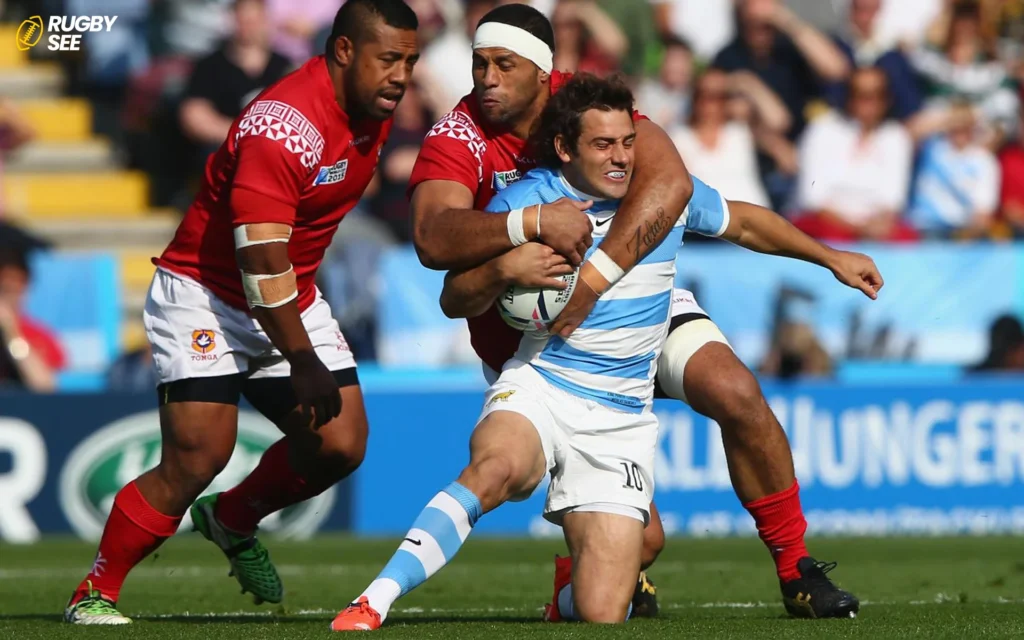Rugby and soccer are two of the world’s most popular sports, each with a rich history and a fervent following. While they share similarities, including the use of a grassy playing field, they also have distinct rules and field requirements. In this article, we explore the feasibility of playing rugby on a soccer field, covering the logistical, regulatory, and practical aspects that both casual players and sports administrators need to consider.
Field Dimensions and Markings:
Rugby and soccer fields differ significantly in dimensions and markings. A standard soccer field measures between 100 to 110 meters long and 64 to 75 meters wide. In contrast, a rugby field is slightly larger, generally about 100 to 122 meters long and 68 to 70 meters wide, including the in-goal area. This difference in size means that while a rugby game can technically be played on a soccer field, the playing area would be more constrained, potentially affecting the flow and strategies of the game.
Moreover, the field markings are distinctly different. Soccer fields feature a halfway line, penalty areas, and goal boxes. Rugby fields, on the other hand, include the halfway line, 22-meter lines, and different zones for goal scoring. To host a rugby match on a soccer field, temporary markings would need to be added, which could confuse players accustomed to the standard rugby layout.
Goal Posts:
One of the most significant physical differences is the goal structure. Soccer uses a horizontal crossbar and net, while rugby goals consist of an H-shaped post with no net. This necessitates either temporary or permanent adaptations to the soccer field’s goalposts to accommodate rugby play and if you want to know about Having Break in Rugby read Do rugby games have a break?
Surface and Safety Considerations:
The playing surface is another critical factor. Both sports typically use grass fields, but the maintenance standards can vary. Rugby fields usually have a softer surface to absorb more impact during tackles and scrums, which are frequent in the game. Playing rugby on a harder soccer pitch might increase the risk of injuries unless the field is adequately prepared and maintained to rugby standards.

Regulatory and Organizational Issues:
From a regulatory perspective, both sports are governed by international bodies – FIFA for soccer and World Rugby for rugby. These organizations set precise standards for official matches, including specific requirements for field dimensions and facilities. Playing a sanctioned rugby match on a soccer field might not meet these official standards, which could be problematic for competitive matches but less so for casual or practice games.
Adaptability and Dual-Use Cases:
Despite these challenges, many communities and sports complexes successfully use dual-purpose fields, often out of necessity due to space and funding limitations. Adaptable infrastructure, such as removable goal posts and temporary line markings, can facilitate the conversion of a soccer field into a rugby field. Such arrangements are particularly common in regions where one sport is less popular than the other, allowing for more efficient use of space and resources.
Practical Examples and Case Studies:
Across the globe, several sports facilities have managed to adapt their infrastructure to accommodate both rugby and soccer. For example, some universities in the United States and Europe use their athletic fields for multiple sports by implementing removable goal posts and temporary lines. These adaptations allow for a quick transformation from soccer to rugby and vice versa, maximizing field utilization and reducing the need for additional space.
Technical Adjustments and Equipment Needs:
To convert a soccer field into a rugby field effectively, several technical adjustments must be made:
- Goal Posts: Soccer goals must be adapted to fit rugby specifications. This can be achieved by adding extensions to the existing structure to form the ‘H’ shape required for rugby.
- Field Markings: Temporary chalk or paint can be used to add rugby-specific markings over the soccer lines. It’s important that these additional lines are clearly distinguishable to avoid confusion during play.
- Safety Equipment: Additional padding might be necessary around the field, especially surrounding the goal posts and along the sidelines to protect players from injuries during aggressive play.

Community and School Sports Programs:
For community centers and schools, the dual-use of a field can significantly boost participation in sports. By allowing a soccer field to double as a rugby field, institutions can offer a wider range of sporting activities without the need for extra resources or space. This is particularly advantageous in urban areas, where space is at a premium. Programs designed to introduce rugby to communities traditionally focused on soccer can benefit from using the existing soccer fields, easing the transition and fostering a multicultural sports environment.
Challenges and Solutions:
While the adaptation process is generally straightforward, it comes with its set of challenges:
- Scheduling Conflicts: Managing a schedule that accommodates both sports without conflicting can be tricky. Sports administrators need to carefully plan events and practices to ensure fair access for all teams.
- Wear and Tear: Increased usage can lead to faster wear and tear of the playing surface. Regular maintenance and possibly more sophisticated turf management systems are necessary to keep the field in good condition for both sports.
- Player Training and Adaptation: Players may need time to adjust to the modified field, particularly if they are used to standard specifications. Coaching sessions focusing on spatial awareness and strategy adjustments can help ease this transition.
Environmental Considerations and Sustainability:
Using one field for multiple sports can also be seen as a sustainable practice. It reduces the ecological footprint by minimizing the land used for sports fields and the resources needed for their upkeep. Moreover, using environmentally friendly materials for temporary markings and ensuring efficient water usage for field maintenance can contribute to a more sustainable sports management approach and if you want to know about Half Time in Rugby read does rugby have half time?

Conclusion:
Playing rugby on a soccer field is feasible with certain adjustments and considerations. While it may not be ideal for official, competitive matches due to differences in field size, markings, and goal structures, it is certainly possible for training, recreational games, or during situations where no alternative is available. Ultimately, the success of such a conversion depends on careful planning, adequate field preparation, and clear communication with players about the modifications.
Whether for interschool tournaments, community sports days, or simply as a practical solution for limited sports facilities, adapting a soccer field for rugby can foster a versatile, inclusive environment for sports enthusiasts. As interest in both games grows globally, the flexibility to accommodate multiple sports on a single field can help promote active lifestyles and broaden participation in these cherished games.










